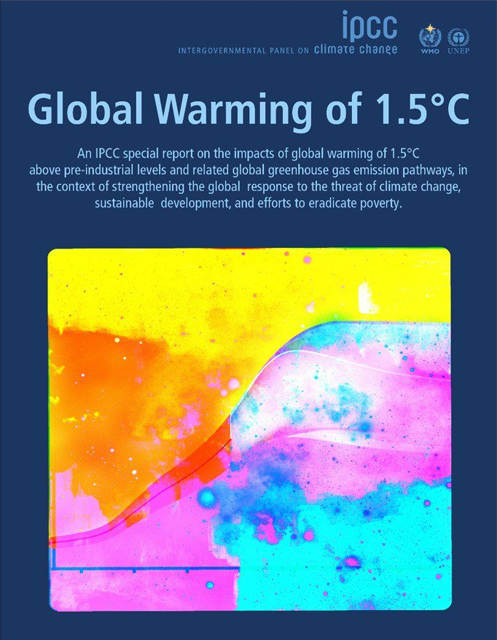…but who’s listening?

The Intergovernmental Panel on Climate Change tells us that dangerous climate change will be unavoidable without a rapid, powerful and unprecedented global effort, starting now. Our government’s response can best be described as a shrug.
Coming at a time when the public debate struggles to get beyond headlines, and when opinion and “fake news” count for more than fact, the IPCC’s “1.5C” report is packed with information about our future. But in this country, no-one in charge seems to be reading it.
Prime minister Scott Morrison said Australia would meet its Paris target “in a canter”, adding, “I’m not going to spend money on global climate conferences and all that sort of nonsense”.
Deputy prime minister Michael McCormack said Australia should continue to mine its “many many decades” of coal reserves regardless of what the IPCC said in its special report on 1.5C of warming.
Our country contributes a “small fraction” of global carbon emissions, said energy minister Angus Taylor, and the main responsibility for mitigation rests with developing countries.
Finally, dismissing scientific analysis that says Australia will overshoot its modest Paris target, environment minister Melissa Price said she was “very comfortable with where we’re heading”.
It’s hard to get the head around such indifference to this report, commissioned by the UN to investigate what a warming limit of 1.5C will mean. But a response by The Australian’s economics correspondent Judith Sloan is a good place to begin.
Sloan said that the IPCC’s use of climate models to study the future – “not that far from making astrological prophecies” – wasn’t really science because “it doesn’t set out refutable hypotheses and test them”.
All I can say is, it’s a long time since Sloan discussed any of this with a practising scientist, certainly not since science started grappling seriously with global systems.
Testing hypotheses about complex planetary processes is all very well, but we don’t have a second identical planet on which to test them. Increasingly sophisticated models help plug that gap, yielding remarkable advances in our knowledge of Earth’s inherently ambiguous climate system.
Sloan also wrote this: “To suggest that all coal-fired power stations will need to be closed by 2050 is not just silly, it is also completely naïve.” Silly and naïve are not the point. Unless we capture and sequester their carbon emissions, the IPCC is telling us we have no choice but to shut them down.
Sloan sees the IPCC advice as dispensable and the status quo as non-negotiable, which in a nutshell is why climate policy has proven so wretchedly difficult for our political masters.
Today’s energy technologies and infrastructures, not to mention current political and economic paradigms, are not immutable. Humans made them and humans can remake them. If enough people around the world believe they should be changed, it can happen.
For the record, the IPCC report’s 91 authors, including leading scientists, economists and other experts from 40 countries, contributed over 1100 pages of information-rich text and supporting annexes, along with 6,000 references to peer-reviewed research.
Like the above-mentioned members of the government I haven’t read the full text and won’t try. But in exploring the IPCC’s advice to policymakers I am struck by a change in tone since the last full IPCC report in 2014: darker, more direct, with a much greater sense of urgency.
The report identifies today’s Arctic sea ice loss, rising sea levels and more extreme weather as strong signs of what is to come. Even a warming limit of 1.5C increases the risk of long-lasting or irreversible changes, such as the loss of some ecosystems. We cannot afford to set it any higher.
In 2018 global (and Australian) emissions are rising and showing little sign of peaking, but the IPCC says a 1.5C limit requires global emissions to be on a steep downward path by 2030.
The world has 12 years to lower emissions by something like a billion tonnes a year. In doing this, says the report, we will have to rely partly on drawing down carbon dioxide from the air using currently-known techniques applied on an unprecedented scale.
Paris Agreement national pledges are clearly inadequate; by the end of this century they would have temperatures 3C above pre-industrial levels, or 2C warmer than today. Australia’s 2030 pledge to have emissions 26 to 28 per cent below 2005 levels is among the weakest of those commitments.
If the PM is right (and expert analysis is wrong) about Australia reaching its target “in a canter”, then he should be spurring the country into a gallop.
Let’s be real. A nation can change rapidly only when all the pieces are in place – when governors and governed alike are shocked into realising there is no option. We are still nowhere near that.
